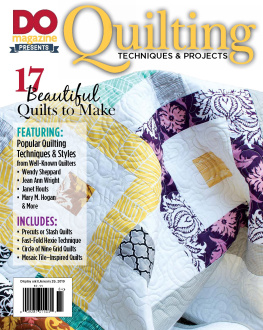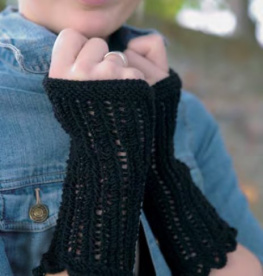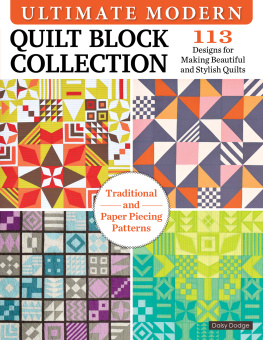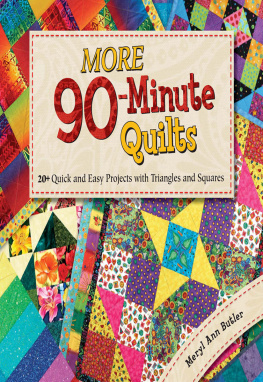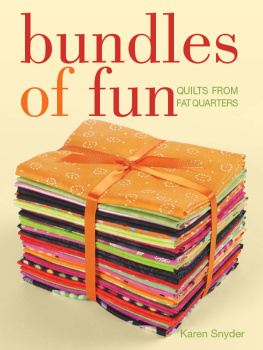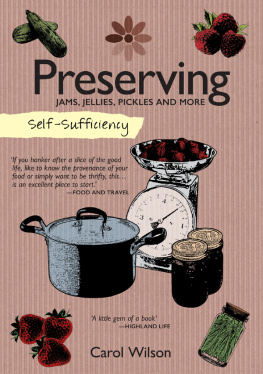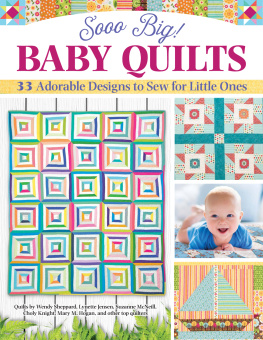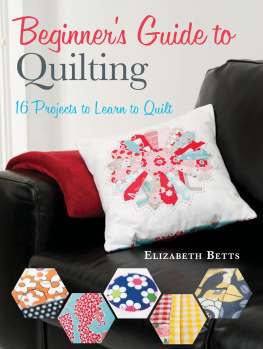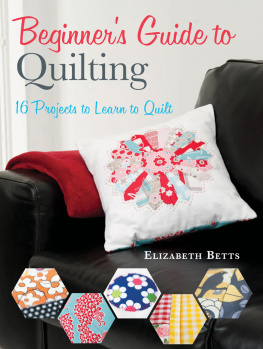Contents
Guide
Contents

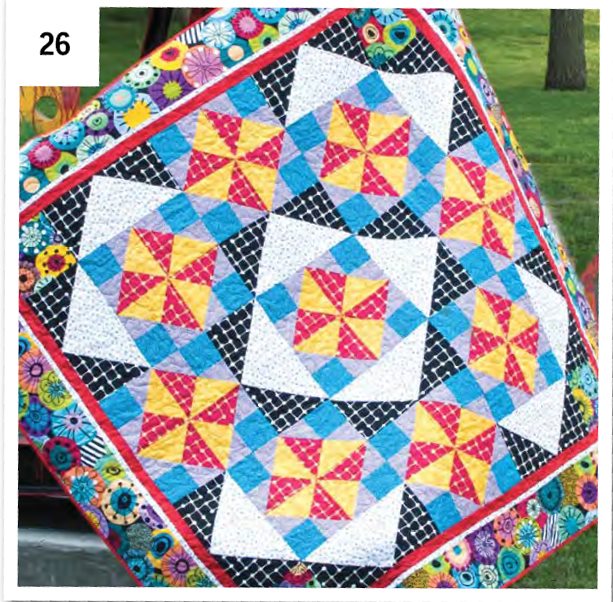

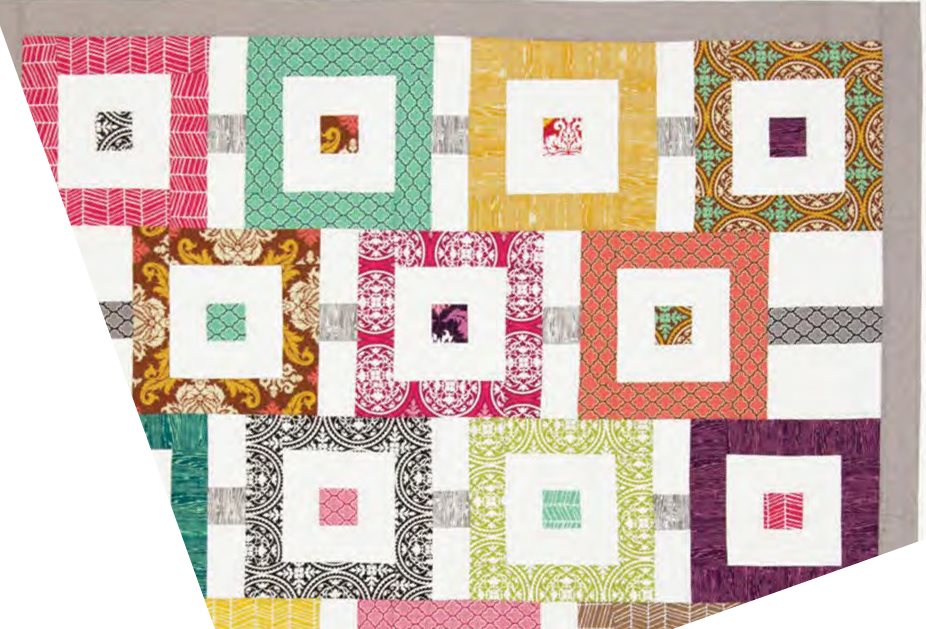
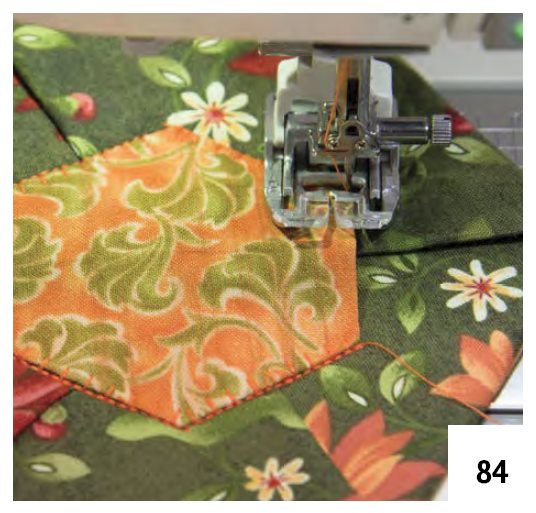
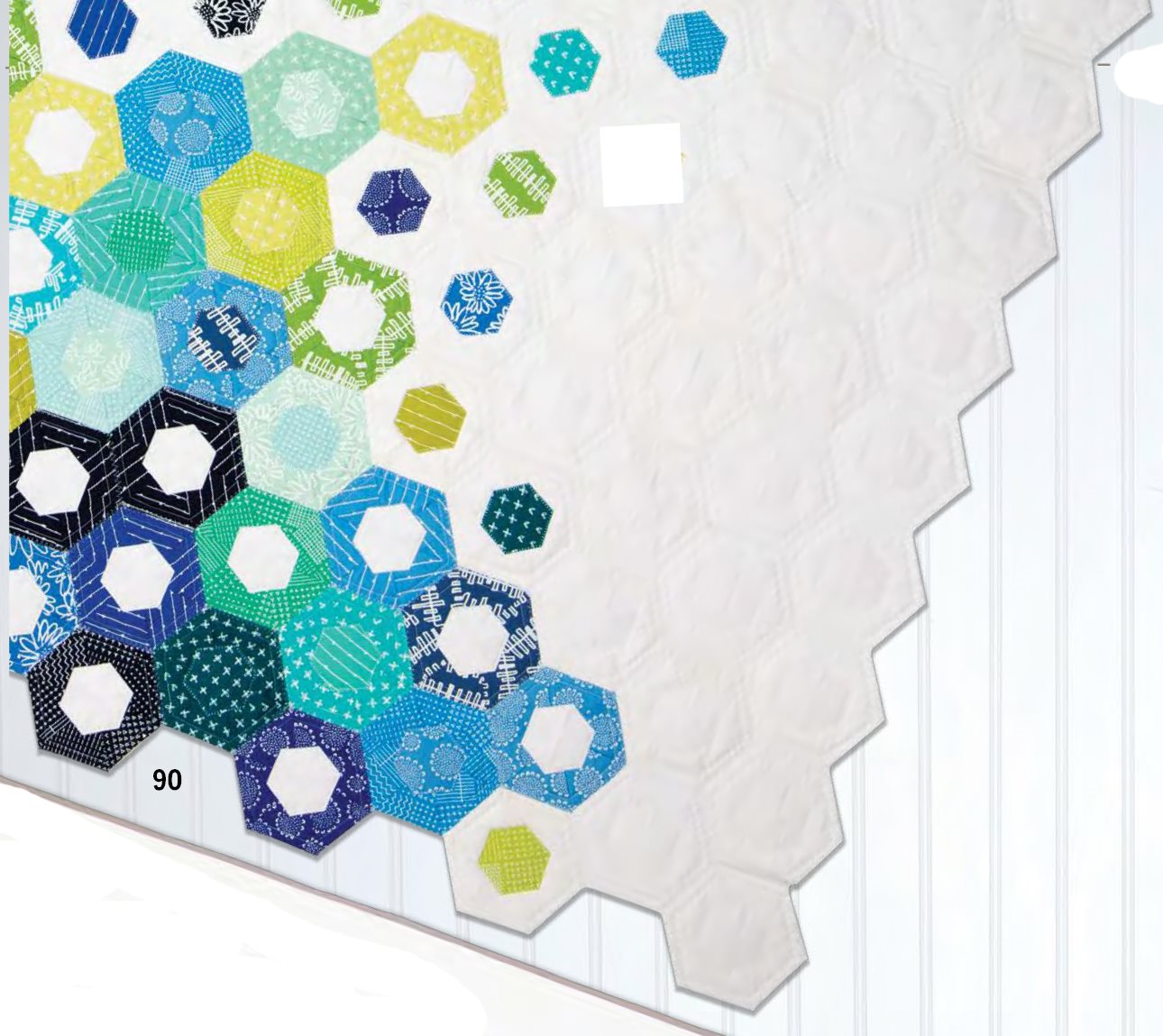


Welcome!
While every quilt is a work of art, its the comfort a quilt can bring both physically and emotionally that draws me to this craft. Making a quilt is truly a labor of love. It carries the story of the person who carefully crafted it, as well as memories of those who use it and appreciate its warmth and beauty.
We are very excited to have Landauer Publishing join our family here at Fox Chapel Publishing. Their hundreds of quilting titles fit right in with our creative philosophy, and we look forward to publishing more new titles with their roster of well-known quilting experts.
This special issue of DO Magazine features an array of quilting projects to use as bedcovers, throws, or wall hangings. Compiled from the works of some of our favorite Landauer authors, you will find unique designs inspired by the mosaic tile floors of Costa Rica ().
Enjoy creating your own quilting story using the projects in this issue. We would love to see what you make, so feel free to send us a photo at .

COMMON METRIC CONVERSIONS |
(Note: The measurements in this issue do not include the metric equivalents. Refer to this chart to convert the most common measurements to metric.) |
" = 0.6cm | 5" = 12.7cm | yard = 0.6m |
" = 1.3cm | 5 " = 14cm | yard = 0.7m |
" = 2cm | 6" = 15.2cm | 1 yard = 0.9m |
1" = 2.5cm | 6 " = 16.5cm | 1 yards = 1.37m |
1 " = 3.3cm | 40" = 1.02m | 2 yards = 1.8m |
1 " = 3.8cm | 41" = 1.04m | 2 yards = 2.3m |
1 " = 4.4cm | 42" = 1.07m | 3 yard = 2.7m |
2" = 5cm | 43" = 1.09m | 3 yards = 3.2m |
2 " = 6.4cm | 44" = 1.12m | 4 yards = 3.7m |
3" = 7.6cm | yard = 0.1m | 4 yards = 4.1m |
3 " = 8.8cm | yard = 0.2m | 5 yards = 4.6m |
4" = 10.2cm | yard = 0.5m | 5 yards = 5m |
4 " = 11.4cm |

Design Originals Presents Quilting Techniques & Projects
Winter 2018, Volume 4, number 4, issue 14
ISSN 2572-0848
eISBN 9781607659358
Design Originals: DO Magazine
903 Square Street, Mount Joy, PA 17552
Phone: 717-560-4703 | Fax: 717-560-4702
PUBLISHER | Alan Giagnocavo |
VICE PRESIDENT-CONTENT | Christopher Reggio |
MANAGING EDITOR | Melissa Younger |
CONTRIBUTORS | Patricia Sanabria-Friederich Wendy Sheppard Janet Houts Jean Ann Wright McB McManus E.B. Updegraff Mary M. Hogan |
EDITORIAL STAFF | Sue Voegtlin Laurel Albright Kaitlyn Ocasio Llara Pazdan Laura Taylor |
LAYOUT AND DESIGN STAFF | Wendy Reynolds |

Newsstand Distribution: Curtis Circulation Company
Circulation Consultant: National Publisher Services
2018 by New Design Originals, Inc. All Rights Reserved.
Note to Professional Copy Services The publisher grants you permission to make up to ten copies for any purchaser of this magazine who states the copies are for personal use.
COPY PERMISSION: The written instructions, photographs, designs, patterns, and projects in this publication are intended for the personal use of the reader and may be reproduced for that purpose only. Any other use, especially commercial use, is forbidden under law without the written permission of the copyright holder.
Images from ).

Mosaic Tile
QUILTING PROJECTS
Patricia Sanabria-Friederich was sitting in church with her mother in her hometown of San Joaquin de Flores, Costa Rica, when she looked down and realized the mosaic tile floor pattern would be ideal for a quilt. She took some photos for reference and began adapting the pattern into a quilt. Soon, she began creating quilts from the mosaics in different churches, schools, and homes throughout Costa Rica.

T he quilts in this article were inspired by mosaic tile floors found in Costa Rican churches, schools, and homes. The floors follow the mosaic tile tradition used in Europe. Up until the mid-to-late 1800s, tiles were imported from Europe, but by the early 1900s, Costa Rican craftsmen began creating and designing their own tiles. As tile factories began to open in Costa Rica, more people were able to afford to have these beautiful mosaics in their homes. However, the pigments and molds still came from Europe and the more colorful or complex the design, the more expensive the tile. Thus, there was a correlation between the tile design and the social status of the owner. The buildings floor patterns reflect what was in fashion at the time of construction. By the 1940s, mosaic tile floors began to fall out of fashion and were used less and less in newer construction. Some of the tile floor colors have faded over time, especially in buildings more than 70 to 80 years old. To this day, Costa Ricas handmade mosaic tiles are still produced for people who want to keep the traditional-style floors.

